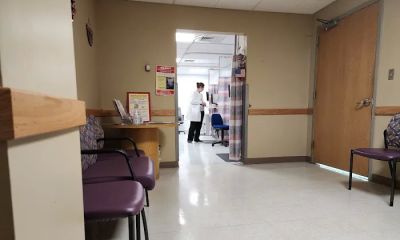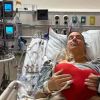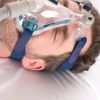- #understanding-travel-and-heart-health - why-travel-affects-your-heart - risks-of-inactivity-and-stress
- #pre-flight-and-pre-trip-preparation - medical-clearance - what-to-pack-for-cardiac-safety
- #in-flight-heart-safety - how-to-prevent-blood-clots - movement-and-hydration-strategies
- #road-trip-heart-health - managing-long-hours-sitting - smart-snacking-and-rest-stops
- #real-traveler-stories - experiences-and-lessons - how-preparation-saves-lives
- #expert-advice-from-heartcare-hub - medical-insight - travel-readiness-checklist
- #post-travel-recovery - monitoring-signs - restoring-circulation-and-energy
1. Understanding the Connection Between Travel and Heart Health
1.1 Why travel affects your cardiovascular system
Traveling—especially for long distances—can subtly strain your cardiovascular system. Sitting for extended periods on flights or road trips reduces blood flow to the legs, increasing the risk of deep vein thrombosis (DVT). Cabin pressure changes, dehydration, and stress further add to the challenge. For individuals with existing heart conditions, these factors can cause elevated blood pressure, swelling, or fatigue. That’s why understanding travel and heart health is more than just precaution—it’s prevention.

1.2 How inactivity and travel stress compound risk
When you remain seated for long hours, blood tends to pool in the lower limbs, and oxygen levels may drop slightly. Combine that with travel anxiety or time-zone fatigue, and your heart is doing extra work. Even healthy travelers can experience mild swelling or stiffness after a long journey. For those managing hypertension or heart disease, proactive preparation can make the difference between a smooth trip and an emergency. At HeartCare Hub, specialists emphasize planning movement and hydration routines as part of your itinerary.
Capital Health Medical Center – Hopewell
capital health medical center hopewell
1 Capital Way, Pennington, NJ 08534, USA

2. Pre-Trip and Pre-Flight Preparation
2.1 Consult your doctor before departure
If you have a history of heart issues—such as arrhythmia, heart failure, or recent surgery—seek medical clearance at least two weeks before travel. Your doctor can adjust medications for altitude or time-zone differences. They may also recommend compression socks or low-dose aspirin for clot prevention during long flights.
2.2 What to pack for peace of mind
Pack your medications in carry-on luggage, and always keep them in original containers with labels. Include a small medical kit with aspirin, electrolyte packets, and emergency contact information. For road trips, store medications in temperature-stable conditions, away from direct sunlight or dashboard heat. Many travelers also bring a portable blood pressure monitor to track vitals mid-journey—a practice strongly endorsed by HeartCare Hub experts.
3. Staying Safe During Long Flights
3.1 How to prevent blood clots on airplanes
Long flights increase the risk of DVT, especially for people over 50 or those with a family history of clotting. The best defense is movement—stand up every hour, flex your ankles, and do gentle calf raises in your seat. Compression stockings can further improve circulation. Avoid crossing your legs and wear loose, breathable clothing.
3.2 Hydration and circulation management
Dehydration thickens blood, which makes circulation harder. Drink water steadily throughout your flight—aim for one cup every hour. Limit alcohol and caffeine, both of which contribute to fluid loss. Simple breathing exercises can also stabilize your heart rate and oxygen intake. Flight attendants often observe that passengers who stretch regularly arrive less fatigued, and cardiologists at HeartCare Hub confirm that small movements prevent major complications.
4. Road Trip Heart Health: Staying Safe on the Open Road
4.1 Countering the effects of sitting too long
Driving for hours poses similar risks to flying—restricted leg movement and prolonged sitting. Plan rest stops every 90 minutes to stretch, walk, and perform gentle leg rotations. Even brief stops boost blood flow and reduce stiffness. Drivers should avoid tight belts or pants that constrict circulation.
4.2 Eating smart while traveling
Skip fast food and opt for heart-friendly snacks like unsalted nuts, fruits, and yogurt. Stay mindful of sodium intake—too much salt can raise blood pressure and cause swelling during long drives. When dining out, choose grilled over fried options, and hydrate regularly. HeartCare Hub nutritionists recommend balancing caffeine intake with equal parts water and including potassium-rich foods like bananas to support heart rhythm.
5. Real Traveler Stories and Lessons Learned
5.1 The frequent flyer’s wake-up call
Consider the story of Mark, a 62-year-old executive who frequently traveled between New York and London. After ignoring mild calf pain following a flight, he was later diagnosed with a small clot. Today, he swears by walking breaks and compression socks. His story underscores the subtle dangers of neglecting heart circulation during travel—and the ease of prevention with awareness and preparation.
5.2 When preparedness makes all the difference
Another traveler, Lisa, managed hypertension for years. Before her cross-country road trip, she scheduled a consultation through HeartCare Hub, adjusted her medication timing, and packed a blood pressure monitor. Her journey went smoothly—proof that proactive measures make adventure possible without sacrificing safety.
6. Expert Advice from HeartCare Hub
6.1 Key takeaways from cardiovascular specialists
According to cardiologists at HeartCare Hub, healthy travel relies on rhythm: hydrate, move, rest, repeat. They emphasize consistency over intensity—gentle activity every hour and hydration throughout the day can cut your clot risk significantly. Travelers with pacemakers or stents should always carry a medical ID card and avoid sitting near strong magnetic fields on airplanes.
6.2 Your travel readiness checklist
Before any long flight or road trip: confirm your medication schedule, set reminders for movement, and note local hospital contacts at your destination. Keep stress levels manageable by arriving early at airports and breaking long drives into shorter segments. HeartCare Hub also offers travel health consultations to tailor these steps to your personal risk level.
7. Post-Travel Recovery: Rebalancing After the Journey
7.1 Watch for warning signs after travel
Once home, pay attention to swelling, shortness of breath, or lingering fatigue. These may signal circulation issues or strain from extended inactivity. Gentle stretching, warm showers, and short walks help restore normal blood flow. If symptoms persist beyond a day, seek medical evaluation promptly.
7.2 Re-establishing your normal rhythm
Resume your usual exercise gradually—start with light cardio or yoga before returning to high-intensity workouts. Maintain regular hydration and balanced meals to aid recovery. For those who travel often, periodic heart checkups through HeartCare Hub ensure ongoing protection and peace of mind.






















Deborah Heart and Lung Center
deborah heart and lung center
200 Trenton Rd, Browns Mills, NJ 08015, USA